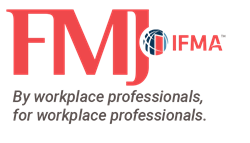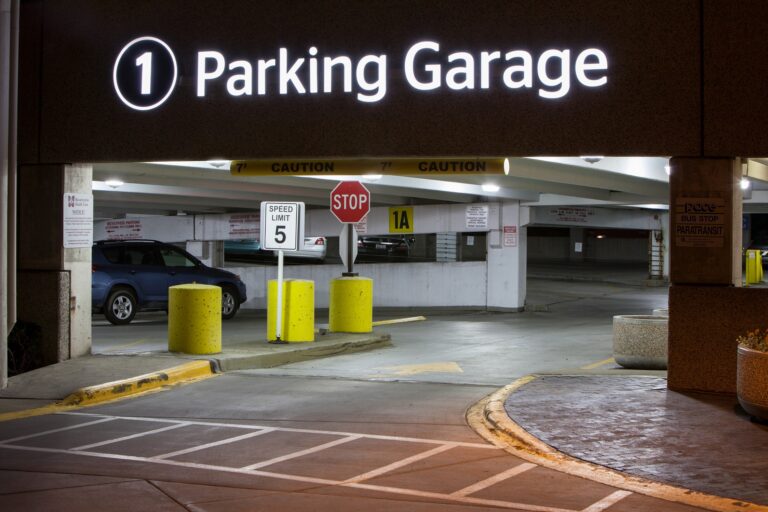Originally published in the January/February 2017 issue of FMJ
Noise in the workplace can be frustrating and distracting. Ever tried to make an important phone call when you’re surrounded by a team of people who are loudly and enthusiastically brainstorming ideas together? You can’t hear yourself think, let alone hear the person on the other end of the line. So, what’s the solution?
Activity-based working (ABW) is paraded as a workplace revolution. But do employees truly benefit from having a variety of activity-specific designed spaces — a space for phone calls, a space for collaborating and so on? Are employees who have different spaces for a multitude of tasks more productive or, at least, less unproductive?
In an era of unprecedented complexity and transformation, ABW has become synonymous with organizations that embrace change. It is touted as fostering organizational growth and competitive advantage. But is ABW delivering to its promise? Or is its potential still to be realized?
A recent study by IFMA Sweden and Leesman afforded the most in-depth look into the impact of this topic to date, asking more than 70,000 employees in 575 workplaces about ABW.
ABW IN CONTEXT
In many organizations, it’s still the norm for employees to have designated desks or cellular offices. In these workspaces, ABW is a major change of direction, so why would organizations consider it as an option?
Over the course of a typical working day, knowledge workers carry out many different and varied activities. Nearly half of employees carry out 10 or more activities as part of their everyday job. Some carry out much more than this.
ABW proponents say that one single desk cannot possibly support all of these activities, and should not be the epicenter of an employee’s productivity. Instead, workplaces should be filled with a variety of different spaces that cater better to employees’ needs and allow them to be more productive.
RESEARCH RESULTS
On first view, statistically ABW environments do not compare especially favorably with non-ABW environments. According to the research, ABW environments have lower effectiveness scores against the key indicators of productivity and pride. Employees in ABW environments reported just an average level of satisfaction, so based on these results alone, workplaces would be hard pushed to justify the adoption of ABW.
But this is not the full picture. When diving deeper into the data by comparing the variety of mobility profiles, a marked difference emerges between those employees who adapt to their new workplace environment and ways of working versus those who do not. For employees in ABW environments who engage with and adapt to their new surroundings, and use them to their fullest potential, there can be significant personal and organizational benefits.
According to the study, the best ABW environments deliver valuable employee satisfaction gains. Employees who embrace ABW report significantly higher levels of workplace productivity and pride, compared to those who are anchored to their workstations. There is also a clear and dramatic increase in satisfaction levels with tasks that require creativity and collaboration.
However, the issue is that many employees in ABW environments are not adapting to the new ways of working in the first place.
THE CHALLENGE OF EMPLOYEE INERTIA
The main obstacle to delivering a successful ABW environment seems to be employee inertia. Giving employees the freedom to move around in different spaces can significantly increase engagement levels and performance. But, in many cases, employees are failing to adopt the behaviors necessary to realize the potential benefits of ABW.
Several organizations that have transitioned to ABW are still populated by employees who are mainly still attached to their traditional work styles. The study found that three in four workers (73 percent) in ABW environments are not working in a mobile or fluid way, despite the variety and flexibility offered by their company. These styles often conflict with the work setting and therefore won’t give organizations and employees the intended benefit.
Organizations need to actively encourage employees to break the engrained habit of working in one place only. Behavioral change, leading to increased mobility, is therefore vital to delivering a successful ABW outcome.
Employees need to be informed and supported to shift from the mobility profile called “campers” or “squatters” — those who perform most of their activities at a single work setting and rarely use other locations within the office — to “intrepid explorers” — those who perform some of their activities at a single work setting but often use other locations within the office. Ideally, employees become “true transients;” those who use multiple work settings and rarely base themselves at a single location within the office.
ABW is not just an interior design project alongside an IT mobility project. It is a huge behavioral change management project that requires leadership support for it to be successful. HR professionals, working alongside their facility management colleagues, also need to play their part in ensuring that a smooth change management program and processes are in place for the transition to be a success.
When activity-based design and activity-based behavior combine, organizations and employees can see significant gains. Mobility is mission-critical when seeking to introduce ABW as a means of improving business productivity and performance. If the workforce is helped in shifting from engrained traditional sedentary workstyles to become more mobile, ABW can be extremely worthwhile.
CONSIDER YOUR ORGANIZATIONAL OBJECTIVES
The research indicates that ABW environments, when executed well, can bring benefits to most workplace activities. A few exceptions that arose in the study were decreased satisfaction in desk-based solo work and for completing tasks that require papers and materials to be spread out. However, when implemented successfully, the benefits far outweigh the minor losses.
The study found that ABW environments are conducive to fostering creative thinking. Particularly for those employees with higher mobility profiles, ABW workplaces can enable significant creativity gains over more traditional environments. Common sense suggests that people are more likely to be creative when they’re relaxing on a comfortable sofa in an informal setting, strolling around an indoor arboretum or sipping on a latte in a café, rather than sitting in front of a screen or at a desk, where they may feel pressured to create.
ABW spaces are also well-suited to conducting informal meetings. Across the four mobility profiles — campers/ squatters, timid travelers, intrepid explorers and true transients — ABW spaces deliver higher employee satisfaction averages. In organizations often engaged in informal meetings, ABW has the potential to significantly benefit employees’ satisfaction with their workspace.
In addition, ABW workspaces delivered higher scores for holding confidential business discussions. For employees in the highest mobility profile, ABW workplaces support increased satisfaction with the ability to successfully conduct these discussions. For other mobility profiles, it’s about encouraging them to move away from their desks for sensitive meetings.
The main thing to clarify is the individual organization’s objectives before considering ABW. If your organization runs on creative thinking and collaboration, then ABW may be the way forward. In an academic setting where people need dedicated space to work with piles of papers, ABW may not be a successful design model.
OFFER A VARIETY OF SPACES
The research results showed variety as being mission critical to the successful adoption of an ABW environment. Variety is not simply about letting people choose which desk they use. This merely creates an illusion of choice and not an agile, flexible environment.
Variety is also not about creating as many spaces as you possibly can. It is not about having sleep pods, slides and following trends; it is about carefully analyzing which activities your workforce performs and making appropriate design choices with these in mind. It is about understanding your people and how they work, and then building the workplace offering around that. It is about providing different workplace physical features and services to complement the array of multifaceted activity matrixes operating within your specific workforce.
Variety can also help to solve the noise problem. When it comes to hindering productivity, noise levels are the single biggest problem. Just one third of people who are dissatisfied with the amount of noise in their office say their environment allows them to work productively. Of those who are happy with noise levels, a staggering 82 percent believe their environment allows them to work productively.
A variety of spaces can drastically reduce the destructive impact of noise simply because people can choose a work zone and soundscape that best suits the activity they’re undertaking and the noise levels that they prefer. People should be able to choose a quiet environment as and when they need to. At the same time, individuals who need to discuss, collaborate and/or brainstorm with others need to be able to do so freely and have suitable spaces provided.
IN SUMMARY
ABW is about creating an intuitive workplace that, by design, empowers people to work effectively. But perhaps most importantly, it is about helping employees understand why they should use the environment in an activity-based way. Employees who do so, in environments that genuinely support activity-based working, reap significant benefits. – FMJ






